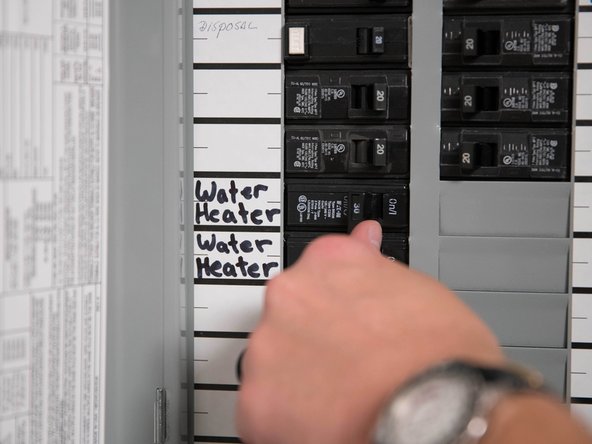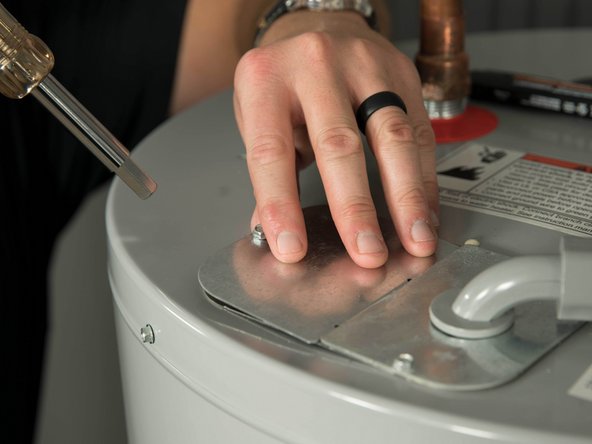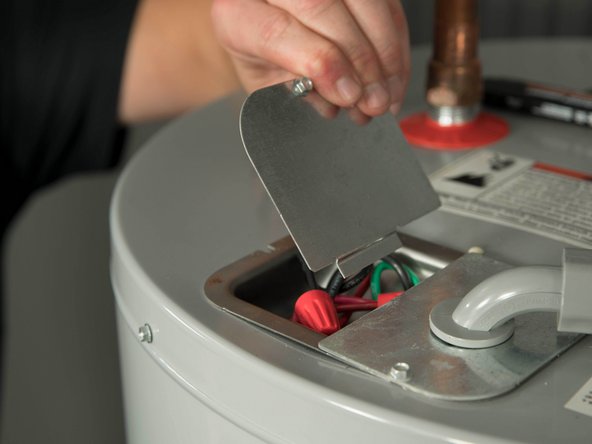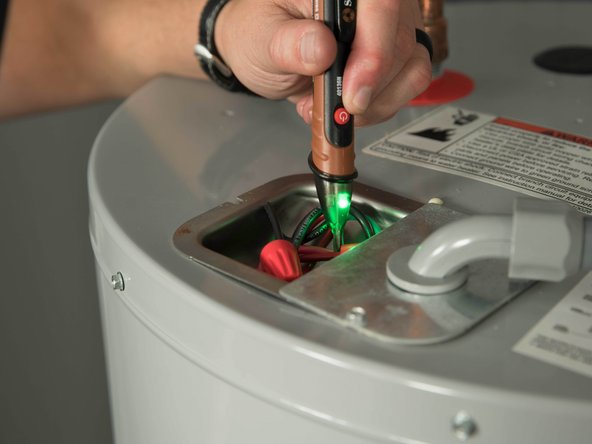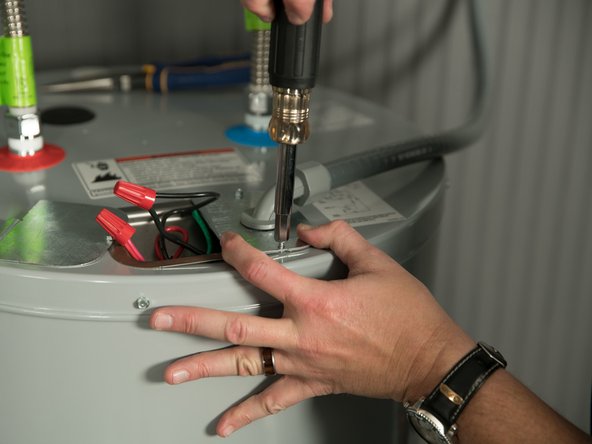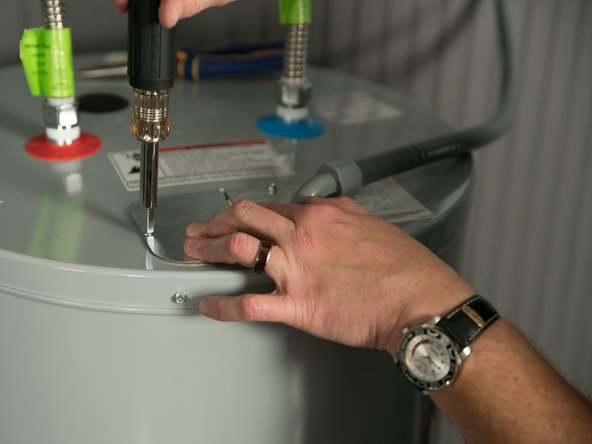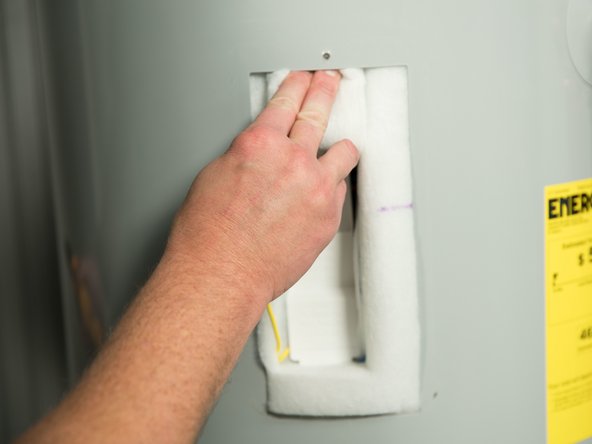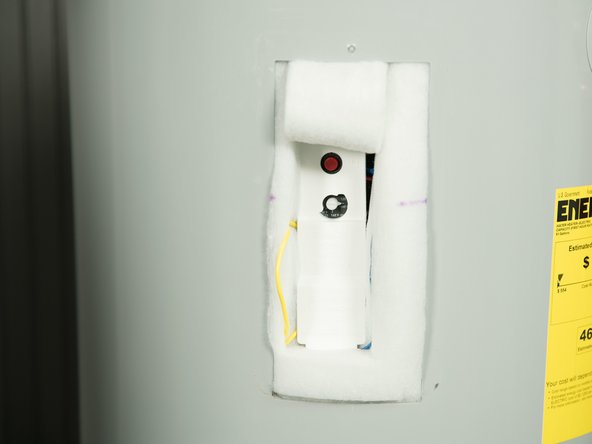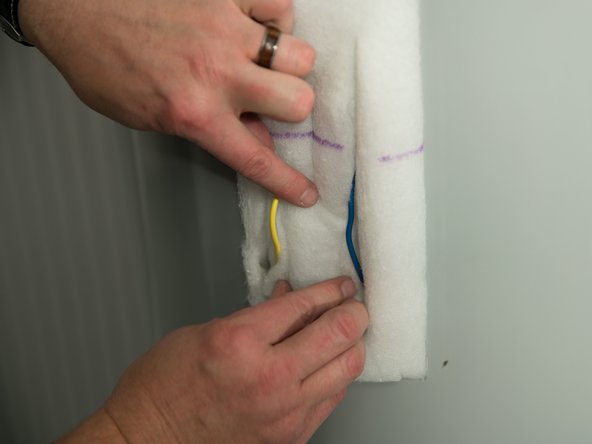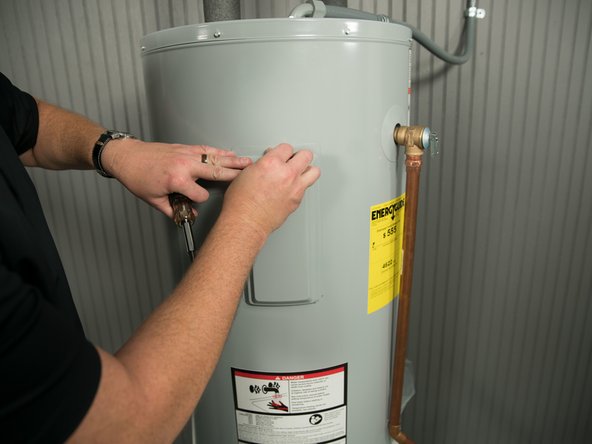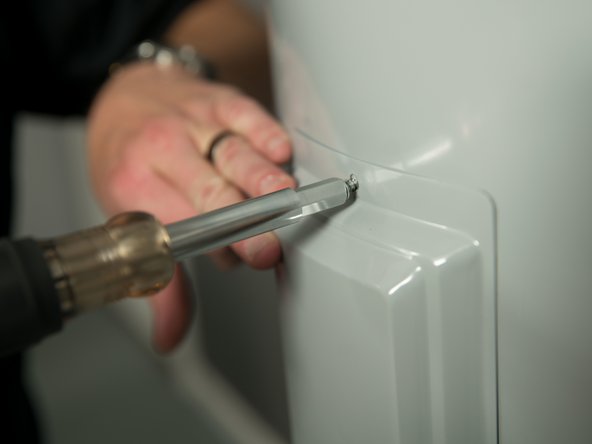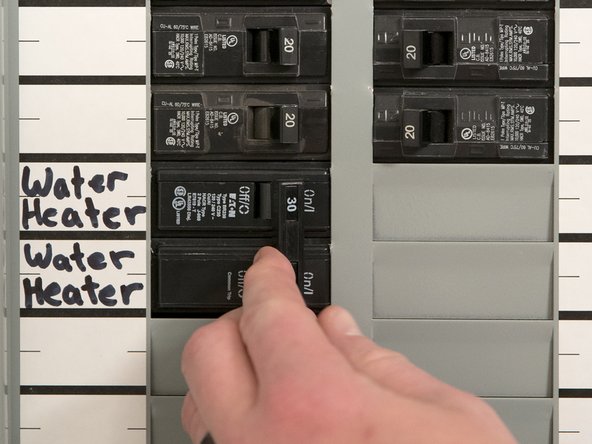Introduction
The information on this web site is supplemental to the printed instructions that came with your water heater. To reduce the risk of property damage, serious injury or death, read and follow all labels on the water heater and the safety instructions in the printed owner's manual.
-
-
Thermometer
-
Non-contact circuit tester
-
1/4" nut driver or Phillip's screwdriver (to remove access panels) and a flat-blade screwdriver (to adjust temperature).
-
Thermostatic mixing valves
-
-
-
The thermostat(s) on this water heater have been factory set to approximately 120°F to reduce the risk of scald injury. You may wish to set a higher temperature to provide hot water for automatic dishwashers or laundry machines, to provide more hot water capacity, and to reduce bacterial growth.
-
WARNING! Higher temperatures increase the risk of scalding, but even at 120°F, hot water can scald. Install point-of-use Thermostatic Mixing Valves to reduce the risk of scalding.
-
If you increase the water heater’s temperature setting, install Thermostatic Mixing Valve(s) at each point of use to reduce the risk of scalding. Adjust Thermostat Mixing Valves at each point of use to 120°F or lower.
-
-
-
Locate the water heater's circuit breaker and turn it OFF (or remove the circuit's fuses).
-
WARNING! Before working on the water heater, use a non-contact circuit tester or volt meter to make sure power is off. Working on an energized appliance can cause electrical burns, electrocution or death.
-
-
-
Open the electrical junction box on top of the water heater.
-
-
-
Using a non-contact circuit tester, check the power wires to make certain the power is off.
-
WARNING! Working on an energized circuit can result in severe injury or death from electrical shock. Check wires with a volt meter or circuit tester to make sure power is off.
-
-
-
Replace the cover on the electrical junction box.
-
WARNING! Be sure all covers are secured to reduce the risk of fire and electric shock.
-
-
-
Most models have two thermostats, but some models may only have one. If your water heater has only one thermostat, it is located behind the lower access cover.
-
Remove the upper and lower element covers.
-
-
-
Fold away the insulation.
-
-
-
Set both thermostats to 120°F.
-
If higher temperatures are required turn the water temperature dial clockwise ( >>) to increase the temperature. (Turn the dial counter clockwise ( << ) to decrease the temperature.)
-
Adjust both thermostats to the same temperature setting.
-
WARNING! Higher temperatures increase the risk of scalding. If you have increased the temperature setting above 120°F, install Thermostatic Mixing Valves at each point of use and set them to 120°F or lower.
-
To avoid a shortage of usable hot water, do not adjust the upper thermostat to a temperature setting that is higher than the lower thermostat's setting.
-
-
-
Fold the insulation back in place.
-
-
-
Replace the heating element covers.
-
WARNING! Be sure covers are secured to reduce the risk of fire and electric shock.
-
-
-
Turn the power ON.
-
-
-
Wait for the water to heat up. It may take several hours for the tank temperature to change.
-
-
-
Install Thermostatic Mixing Valves at each point of use.
-
Adjust Thermostatic Mixing Valves according to manufacturer's instructions.
-
You can set the water heater's thermostat higher than 120°F if you install thermostatic mixing valves at each point of use and set them to 120°F or lower.
-
WARNING! Higher temperatures increase the risk of scalding, but even at 120°F, hot water can scald. Install point-of-use Thermostatic Mixing Valves to reduce the risk of scalding.
-
-
-
Check the water temperature at all points of use in your home (for example, bathtub faucet, shower, or lavatory sink).
-
Adjust the Thermostatic Mixing Valves so that water temperature at any fixture is at or below 120°F. If you aren’t sure how to adjust the Thermostatic Mixing Valve settings, or aren’t sure if you have Thermostatic Mixing Valves, contact a qualified person for assistance.
-
WARNING! Because of the increased risk from scalding, if you set the water heater’s thermostat(s) higher than 120°F, Thermostatic Mixing Valves at each point of use are recommended to reduce the risk of scalding.
-
Cancel: I did not complete this guide.
One other person completed this guide.






